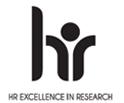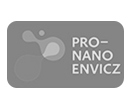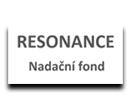Obituary for Prof. Rudolf Zahradník published by International Academy of Quantum Molecular Sciences (IAQMS).
The obituary was co-authored by our former director Prof. Petr Carsky, whose career was significantly influenced by Prof. Zaharadnik from the time on they first met in 1959.
Rudolf Zahradník was born in 1928 to a Czech family in Slovakia. On the eve of the second world war, the family moved to Prague. It was during participation in the Prague uprising in May of 1945 that he met the love of his life, the slightly younger Milena. They were married in 1954 and lived in Prague until the fall of 2020, when they passed away within a week of each other, leaving a daughter and a grandson.
Rudolf completed his undergraduate education at the Institute of Chemical Technology in Prague in 1952. This was a time of massive political oppression and he was prevented from entering the graduate program in chemistry. He was fortunate in that an enlightened and courageous director of a Research Institute for Work Hygiene and Occupational Diseases, Prof. J. Teisinger, offered him a refuge. There, Rudolf was in essence his own Ph.D. research supervisor and completed his dissertation in 1956. His work laid the foundations of the QSAR (Quantitative Structure-Activity Relationships) method for computer-aided drug design, simultaneously with and independently of C. Hansch at Pomona College in California. The procedure turned out to be very useful and became very popular throughout the world.
However, Rudolf soon found the purely empirical nature of QSAR unsatisfactory, and turned his attention to quantum chemistry, which offers truly fundamental insight into chemical processes. He was able to secure a position in one of the institutes of the Academy of Sciences, directed by a leading Czech physical chemist at the time, Prof. R. Brdička, and started a collaboration with a theoretical physicist, J. Koutecký. Their happy symbiosis laid ground to what became known as the Czech school of quantum chemistry. In spite of woefully inadequate computational equipment and very constrained ability to attend conferences or give lectures abroad, within a few years Zahradník and Koutecký produced important results, trained successful students, and gained worldwide recognition. Perhaps the best known of the students is Jiří Čížek, who introduced to chemistry the coupled cluster method, nowadays viewed as the “gold standard” procedure. After the Russian-led invasion of the country in 1968, which was followed by a long second wave of political oppresion, Koutecký and several other group members emigrated. Rudolf turned down attractive offers from abroad, stayed, and continued his work under very difficult circumstances in the same institute, after 1972 called the J. Heyrovský Institute of Physical Chemistry and Electrochemistry. He was considered politically unreliable and was not allowed to have any leadership position in the institute or to give lectures for students.
The situation changed dramatically in 1989, when the communist dictatorship was overthrown. Rudolf was subsequently appointed as a professor at the Charles University, was elected to be the director of the Heyrovský Institute in 1990, and to be the president of the Academy of Sciences in 1993. After serving two terms, he became an honorary president in 2001, returned to research work and remained active in public life.
The Czech Academy of Sciences is a collection of research institutes similar to National Laboratories in other countries. Rudolf and several others felt that the country also needed to revive the long tradition of an honorific scientific society similar to Academies in other countries, interrupted during the days of dictatorship, and in 1994 they founded the Learned Society of the Czech Republic. Rudolf was elected as its first president and served until 1997. He was also a founding member of the Czech Academy of Engineering (1995).
Rudolf contributed to many areas of quantum chemistry. He had an uncanny ability to anticipate the development of general interest in a new area and to contribute to its opening before it truly blossomed. Once the area became popular, he started to open another one. The second-rate computer facilities available to him made it impossible to keep up once a topic truly developed. His primary interests were chemical reactivity, molecular spectroscopy, and weak intermolecular interactions. His work appeared in 374 journal articles and more than a dozen books.
Rudolf was a very popular lecturer at conferences and in institutions and spent time as a visiting professor at altogether twelve universities in Europe, the United States, and Japan. He served as a long-term member of the editorial and advisory boards of many international journals. He won numerous awards and distinctions abroad, and after 1989, also at home. He was elected to the International Academy of Quantum Molecular Sciences (1982) and four other national and international academies, as a fellow of the World Association of Theoretically Oriented Chemists, and a honorary member of the German and Swiss chemical societies. He received over a dozen medals and state awards for his scientific accomplishments and public activity, not only in the Czech Republic, but also in Austria, France, Slovakia, Bulgaria, and the Vatican. He was an honorary citizen of several Czech towns and received nine honorary doctorates from Czech, Slovak, German, Swiss, US, and Canadian universities.
Rudolf Zahradník’s wise counsel and gentle guiding hand will be missed terribly, in his country and elsewhere.
Petr Čársky:
Members of the International Academy of Quantum Molecular Sciences (IAQMS) very much regret having to announce that one us, Professor Rudolf Zahradník, passed away on October 31. Our great sorrow will be shared by his colleagues, his former students and many friends.
Together with Professor Jaroslav Koutecký, Professor Zahradník pioneered what may be called the Prague school of quantum chemistry. In 1959, when I was a freshman in the Department of Chemistry at the Charles University in Prague, I had a fortunate opportunity to meet Professor Zahradník. At that time I was spending a couple of hours a week as a volunteer in an organic laboratory, where I met Josef Michl, many years later a famous physical organic chemist and a previous President of IAQMS. One day Josef told me in the lab “come with me, there is an interesting seminar today“. It turned out that the invited external lecturer was Rudolf Zahradník. I hardly understood what the lecture was about, but I was greatly impressed by the lecturer’s enthusiasm and his way of presentation. At the end of his lecture Prof. Zahradník showed a slide with a structure of uracil with several numbers attached to atoms and bonds that he called HMO electron densities, bond orders, and free valences. He concluded his lecture by saying triumphantly “now you know everything about the chemistry of uracil“. I was enchanted, and I became eager to learn more about this new miraculous tool in chemistry. However, I was unable to find any textbook on my own, so eventually I decided to ask Professor Zahradník for assistance. I was pleased very much when he invited me to visit him in his office. At that time Rudolf Zahradník (at the age of 33) had already become a distinguished internationally recognized quantum chemist and was the head of the quantum chemistry group at the Institute of Physical Chemistry of Czechoslovak Academy of Sciences. In retrospect I remember with happiness the cordial welcome I received from him as an utter stranger. Rudolf Zahradník lent me a copy of Streitweiser’s freshly published book Molecular Orbital Theory for Organic Chemists and suggested a fixed schedule for our meetings, according to which I was supposed to read a chapter every week and then come to report on my understanding of the topic. Since then Rudolf Zahradník became my mentor and I am grateful to him for all the time he devoted to my education with patience and kindness. All my colleagues who also are his former students experienced the same kind treatment.
In early 1960’s, the Czechoslovak Academy had no computational facilities and all calculations had to be done on mechanical calculators. The situation did not improve much even in the 1970’s. Then, calculations had to be done on ill-functioning copies of already obsolete IBM machines manufactured in the East European block. Still, Rudolf Zahradník’s charisma and encouragement had a very beneficial impact on the friendly and productive atmosphere in his group. The growing international recognition of Rudolf Zahradník was also beneficial for breaking our isolation behind the Iron Curtain. The considerable handicap imposed by severe restriction of travel to the West was eliminated to some extent by visits of the best known representatives of international quantum chemistry to Prague, such as Charles Coulson, Roald Hoffmann, John Pople, and many others. As a host, Rudolf Zahradník stimulated informal meetings of his students with his visitors. Along with others, I greatly profited from making such acquaintances, some of which led to a lifelong friendship. Several years before 1968 the communist regime started to lose its vigor and under political pressure from abroad released somewhat its oppression. It was just the time when I was a Ph.D. student under Zahradník’s supervision. I remember that time with relaxed atmosphere, shared enthusiasm in work and joyful parties both in the Institute and in Zahradník’s apartment and his family cabin near Prague.
Unfortunately, a tough communist regime was restored a few months after the occupation of the country by foreign armies in August 1968. This had a destructive effect on the Institute. Non-party members were no longer allowed to chair departments or lead research groups and were mostly substituted by people of mediocre scientific and moral quality. In Zahradník’s case this was especially sad. He was subordinated to his former Ph.D. student who started his career by applying for membership in the communist party. For Rudolf Zahradník, the following twenty years were full of humiliation and oppression. He used them to demonstrate that he was a real patriot in the best meaning of the word. He was offered a chair at the Technical University in Darmstadt in West Germany, but he stayed in his beloved Prague. He insisted firmly on his high moral standards and by his brave behavior he actually gained the respect not only within his group but also with some liberal and influential party members outside the Institute, whose support later made his life at the Institute somewhat more tolerable. Even under these difficult conditions, the scientific activities of the group continued to be recognized internationally, as evidenced by the election of his former students to prestigious scientific societies: Michl (IAQMS 1988, WATOC 1992), Čársky (IAQMS 1994, WATOC 1996), Hobza (WATOC 2017). Zahradník himself was elected a member of IAQMS in 1982 and of WATOC in 1986.
After the “velvet revolution” the director of the Institute was gently persuaded to resign and Rudolf Zahradník was spontaneously elected as the new director. He succeeded in transforming the J. Heyrovský Institute of Physical Chemistry into a modern scientific institution in a gentle and elegant way. Poor scientists, who had made their career primarily by collaborating with the regime, left the Institute, mostly on their own initiative. The personnel of the Institute was reduced to one-half, without affecting the scientific outcome, as measured by the number of papers published per year. Equally successful was Rudolf Zahradník’s leadership of the Czech Academy of Sciences as its President in the period from 1993 to 2001.
His colleagues, former students, and friends deeply appreciate his devotion to science and his contribution to progress in quantum chemistry, and now miss him as an example of a genuine democrat with humanistic attitude to and understanding of life. They also remember him as an entertaining companion at parties and as a wise and charming conversation partner. There are many of us who miss his warm friendship.
Petr Čársky















